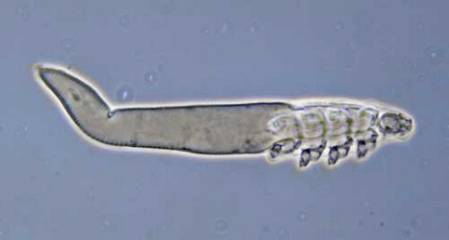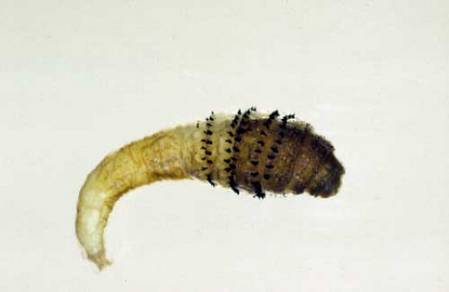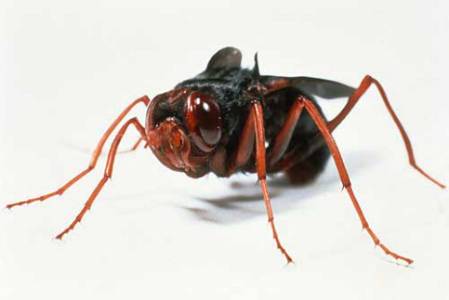Parasites: the name sends a shiver down the spine of many and makes the hairs rise on the back of my own neck, which is exactly why parasites made for a fascinating subject for a Nature Live here at the Museum. Ranging from human-flesh-eating ones, to those that live happily inside the stomach of a live rhino, Zoë Adams one of the Museum's passionate entomologists presented just how she became so 'attached' to studying parasites.
The event started by defining a parasite as a species that lives off or within another organism (the host), but at that organism's expense. With the audience then giving estimates on how many different types of parasites there are in the world, the answer was that up to one third of all life on earth could be technically classed as a parasite.
This then led onto the question, 'is there likely to be a living parasite present right here, right now inside the Attenborough Studio?' A question to which multiple audience members turned to each other with rather concerned looks on their faces. In truth it was revealed that there would almost certainly be a parasite present in the studio, because many of our own eye lashes and eyebrow hairs are home to the humble but harmless follicle mite (Demodex folliculorum). The follicle mite feeds off the sebum that our skin secretes in order to stay supple, and at least one in every three people is predicted to be a host to them.
The follicle mite (Demodex folliculorum) that lives in the eyebrows of many people
The talk then proceeded with some rather nasty looking images displayed on screen, showing a botfly larva parasitising a human host. However, what Zoë went on to highlight was that this particular human host was none other than her own boss, who had become home to one of these blood hungry larval creatures while on a field trip in Bolivia! One of the images showed how a botfly larva obtains oxygen by using a small breathing tube which pokes out of the surface of the skin. The botfly larva eventually had to be surgically removed.
Botfly larva, showing the breathing tube that it uses while buried under the skin of its host
With this newfound knowledge, and an audience suddenly more likely to think twice before booking there next holiday to exotic climes, the Nature Live moved onto other, more familiar, wild mammals that suffer from parasites... a personal favourite parasite of Zoë's being the rhinoceros stomach botfly (Gyrostigma rhinocerontis).
Zoë expertly explained how these parasites have a very interesting lifecycle which relies on the rhinoceros being a creature of habit, choosing to respond to the call of nature and deposit their dung in the same places each time throughout their natural range. This particular botfly larva chooses to house itself within the stomach of rhinos as it is warm and safely away from natural predators. Once the rhino has 'done its business' the larva pupates in the faeces now outside of the rhino, where it can emerge and wait for another rhino host to do the same.
After another rhino has visited and deposited another stomach botfly larva in the same pile of dung, the botflies are able to emerge from pupation and mate, creating a new generation which can then repeat the lifecycle. This unique life cycle of the rhinoceros botfly is only made possible by the rhino using these same areas for defecation, just like humans repeatedly use the same locations for their own business (i.e. public toilets).
An adult rhinoceros stomach botfly (Gyrostigma rhinocerontis), whose larvae happily reside within the stomach of a living rhino as part of its lifecycle
By the end of the Nature Live, the audience was certainly left feeling slightly baffled by the sheer numbers and range of different life strategies that parasites have evolved to occupy their niche in the natural world. Though, one hopes, they also left with a new found respect for the amazing and effective strategies that parasites use to live their lives.





